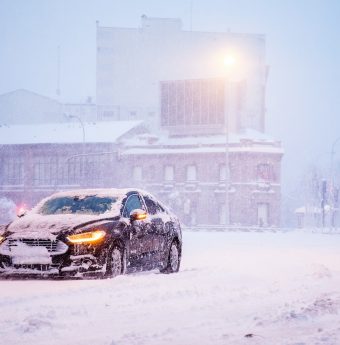How to Winterize a Car: A Complete Guide
/ 5 Stars read 2 min

The winter months are punishing for any vehicle.
The frigid temperatures, snowy and icy road conditions can make driving conditions quite hazardous.
You need to prepare your car to give its optimum performance while driving throughout winter by performing vital checks and protecting every sensitive part from the winter weather.
Inspect and Test the Mechanical and Electrical Components
Even if your visit to the mechanic is routine, it is a great idea to understand how your car works in winter to avoid any surprises by executing the following:
- Ensure your vehicle brakes, heater, rear window defroster, windshield wipers, and all lighting are in correct working order. Doing this assures you of good visibility, satisfactory cabin temperature, and the ability to get help on time if you encounter a breakdown.
- Your vehicle requires clean recommended fluids for it to work optimally. Your engine coolant must never run on water, but the manufacturer’s recommended antifreeze. These are usually premixed and use an antifreeze refractometer if you are unsure of the age, amount, and coolant strength of the coolant in your radiator.
- Most modern engines use multi-weight oils suitable for a wide range of temperatures. However, it is good practice to check your owner’s manual to determine whether you require an oil change before the freezing winter temperature drop.
- Check your transmission fluid for condition and level, and if oil is low or condition is not good, endeavor to top up or replace the fluid.
- Road salts and wet weather will have you wash your windshield often. Use only washer fluid antifreeze during this period, as water would freeze up the lines. If you have water in your washer reservoir, drain and replace it with washer fluid antifreeze.
- Ensure your battery is in good condition and has enough power to start your engine during cold temperatures. For battery not replaced within the last three years, inspect.
- Inspect all rubber hoses and drive belts and ensure they are not worn, soft, or brittle but firm and pliable.
We wholeheartedly recommend that you consider having your mechanic take a look, too. Their experience will not only ensure your vehicle’s mechanical and electrical components pass but you’ll also have peace of mind when driving those snowy roads.
Winterizing a Car’s Exterior
The exterior of your vehicle especially requires care to prevent rust, improve visibility and assure drivability.
- Before winter, wash and wax the body to ensure your paint repels road debris and road salts that could cause rust. Ensure you flush the underside of the vehicle thoroughly.
- Inspect windshield wipers for wear and cracks and replace if worn.
- Inspect and lubricate door locks to avoid water getting into the hinges by using a door lock lubricant or silicone spray.
- Switch to winter tires for better traction (particularly in areas prone to ice and snow). Ensure proper tire pressure to account for the colder temperatures.
Winterizing a Car’s Interior
The interior of your vehicle must be configured and rigged to ensure it is easy to clean at all times during the winter months by adhering to the following tips:
- Ensure you compile an emergency kit that comprises battery jumper cables, flashlight with batteries, first aid kit, blankets, phone charger, bottled water, car tool kit, tire pump, and pressure gauge, and some road flares
- Install rubber floor mats to prevent soiling and wetting of your carpets.
- Inspect and clean door gaskets. Lubricate door gaskets with silicone spray/ lubricant.



